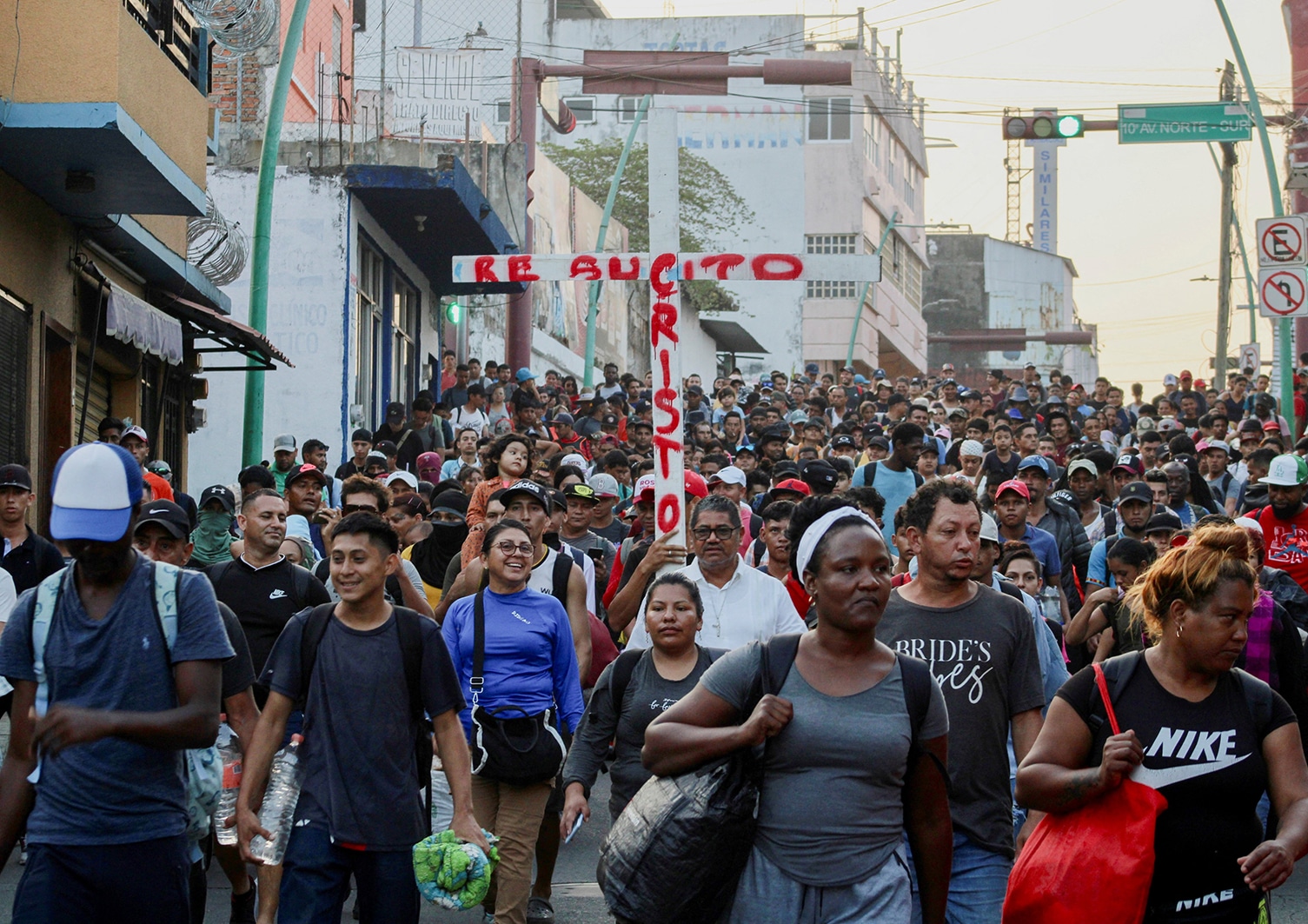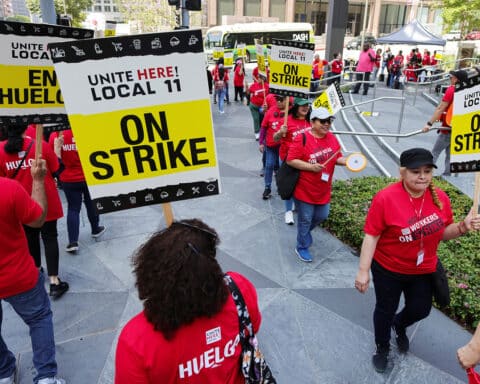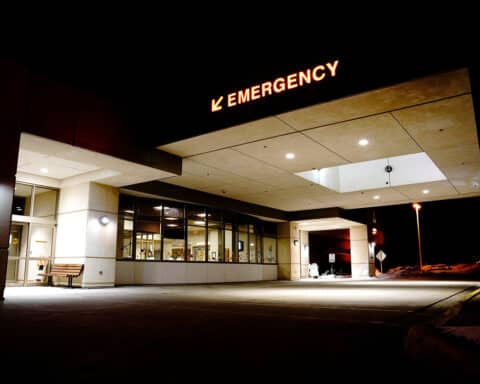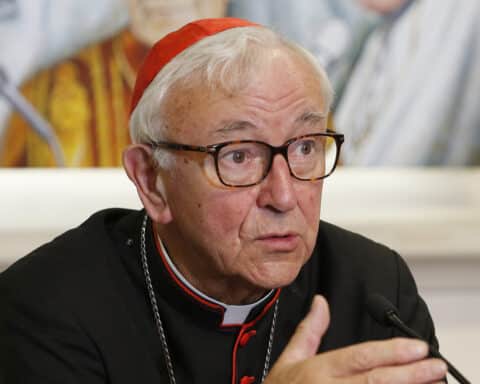MEXICO CITY (OSV News) — One year after the Ciudad Juárez migrant detention center fire, a caravan of approximately 2,000 migrants called “Viacrucis migrante” set out from the southern Mexican city of Tapachula at the start of Holy Week.
The reference to the crucifixion of Christ — reenactments of which are commonly called via crucis in Latin and Spanish — calls attention to the plight of migrants as they move northward through Mexico on journeys rife with risks such as extortion and kidnapping.
“Migrants are a suffering population,” said Father Heyman Vázquez, pastor of the San Andrés Apóstol Parish in Ciudad Hidalgo on the Mexico-Guatemala border. “We use the image of the via crucis … which is the passion, the suffering of our Lord Jesus Christ.” The priest was present at the start of the caravan because his parish is right at the point migrants cross into Mexico.
Locals weary of supporting caravans
But Father Vázquez is one of the few who actually assist the caravans from the Church side. Caravans have become controversial in Chiapas, Mexico’s southernmost state, according to Catholics working with migrants, as locals grew weary of supporting large numbers of caravan travelers regularly passing through. The directors of Catholic-run migrant shelters also express misgivings over supporting caravans, saying it taxes scarce resources and presents security risks for them, though parishes still pitch in with assistance such as food and clothing.
Migrants from Central and South America — and beyond — regularly enter Mexico in attempts to reach the U.S.-Mexico border. Many become stranded in the southern city of Tapachula near the Guatemala border, however, waiting for Mexican officials to issue documents allowing them to transit the country.
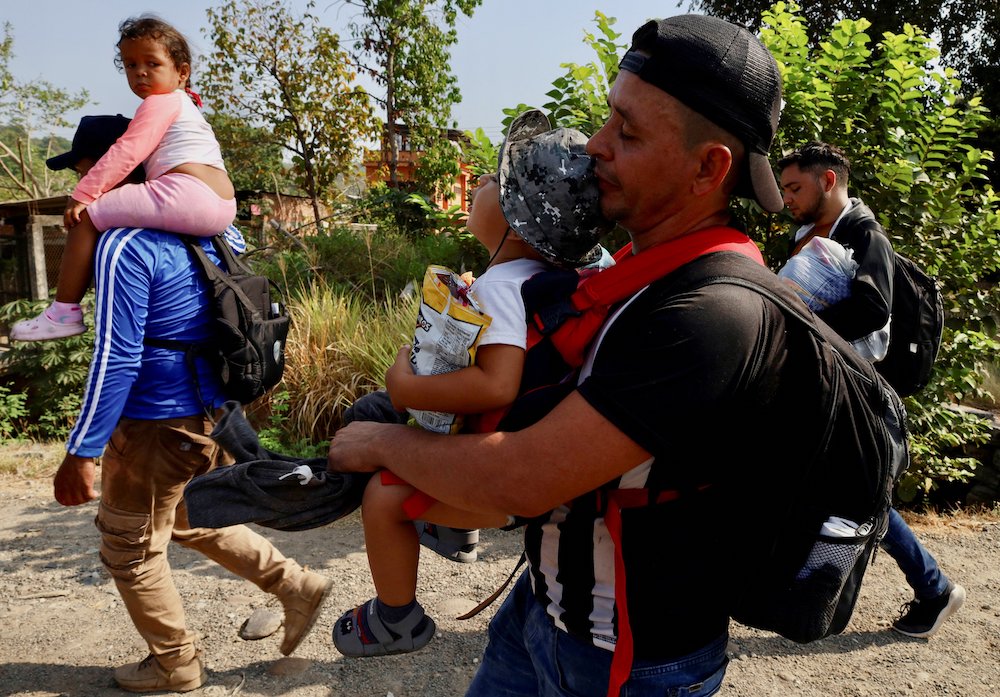
Catholics working with migrants say people stranded in Tapachula often form caravans — with the assistance of activists — in an attempt to pressure immigration officials and speed up the issuing of documents. But no caravans advance beyond the state of Chiapas, which borders Guatemala.
“(Caravans) have worked to put pressure on the immigration authorities but only partially,” Scalabrinian Father Julio López, executive secretary of the Mexican bishops’ migrant ministry, told OSV News. “Caravans don’t work as a mechanism to advance and reach the northern border or at least Mexico City. … The people who manage to advance do so individually.”
Immigration officials generally break up the caravans by issuing documents. But those documents often don’t allow for passage beyond southern Mexico, prompting people to apply for asylum instead or resort “to organized crime,” or human traffickers, “which operate in collusion with some officials,” Father López said.
The current caravan does not have the migrant ministry’s support, Father López emphasized, saying, “The name ‘viacrucis’ is being used to promote a caravan” for media purposes. “They’re using the cross as a symbol,” he added.
New tactics after fire
The caravan comes as Mexico marked the first anniversary of a fire which claimed 40 lives in a migrant detention center in Ciudad Juárez, which sits opposite El Paso, Texas.
Catholics working with migrants in southern Mexico say immigration officials have changed their tactics since the blaze on March 27, 2023.
“What we’re seeing is that immigration officials now don’t detain migrants, but they don’t let them board buses, don’t let them use any kind of transportation. They’re forcing them to walk,” Father Vázquez told OSV News.
Mexican immigration officials are also sending migrants from Mexico’s northern border with the United States to cities near the country’s southern border with Guatemala rather than to their countries of origin.
“They try to head north again” to the United States, said Franciscan Father Ricardo Roque, director of the Franciscan-run shelter La 7. “A minority return to their countries.”
Even if not supportive of caravans, the Catholic Church is relentless in its support of migrants, also including spiritual assistance during the Holy Week.
Catholic-run migrant shelters throughout Mexico often organize reenactments of the crucifixion of Christ during Holy Week as a means of expressions of faith and solidarity with migrants. In the southern state of Tabasco, Father Roque’s La 72 organizes an annual via crucis, in which migrants carry a cross some 50 miles from the border with Guatemala to the shelter’s premises in the municipality of Tenosique.
“It’s saying this: I want to accompany you. I want to suffer with you. It’s being with you and always supporting you,” Father Roque told OSV News. “The objective is to emulate or feel firsthand what it’s like when they enter the country. … And from that religious point of view, it’s saying: We walk with you, we are there on your path.”

